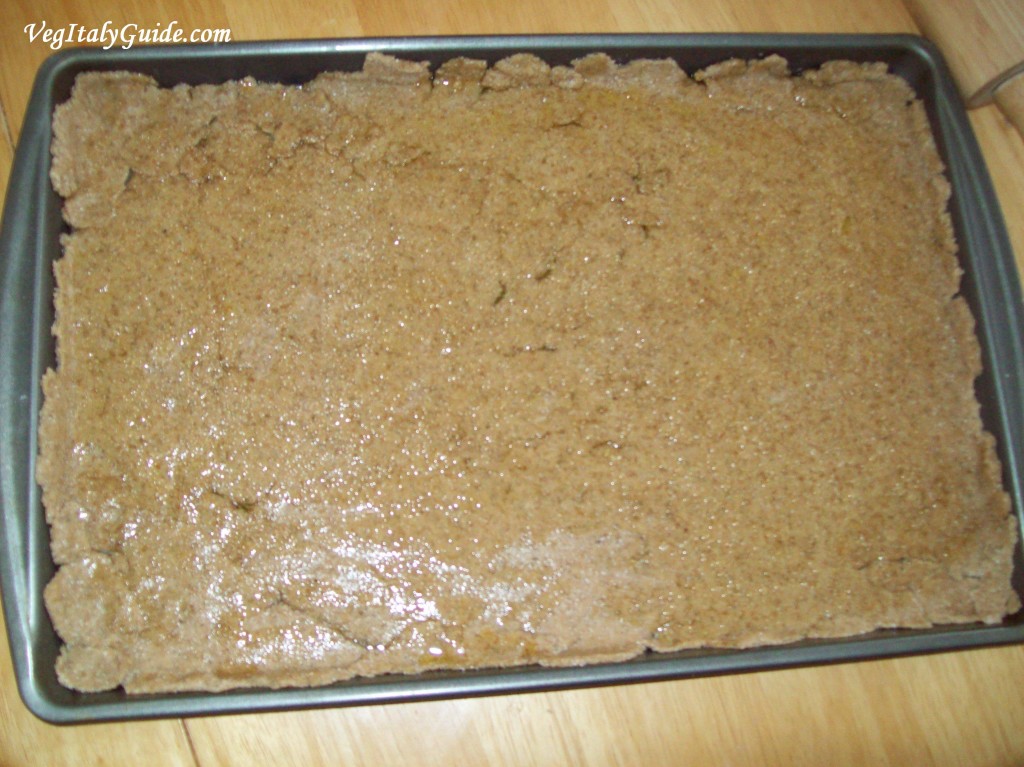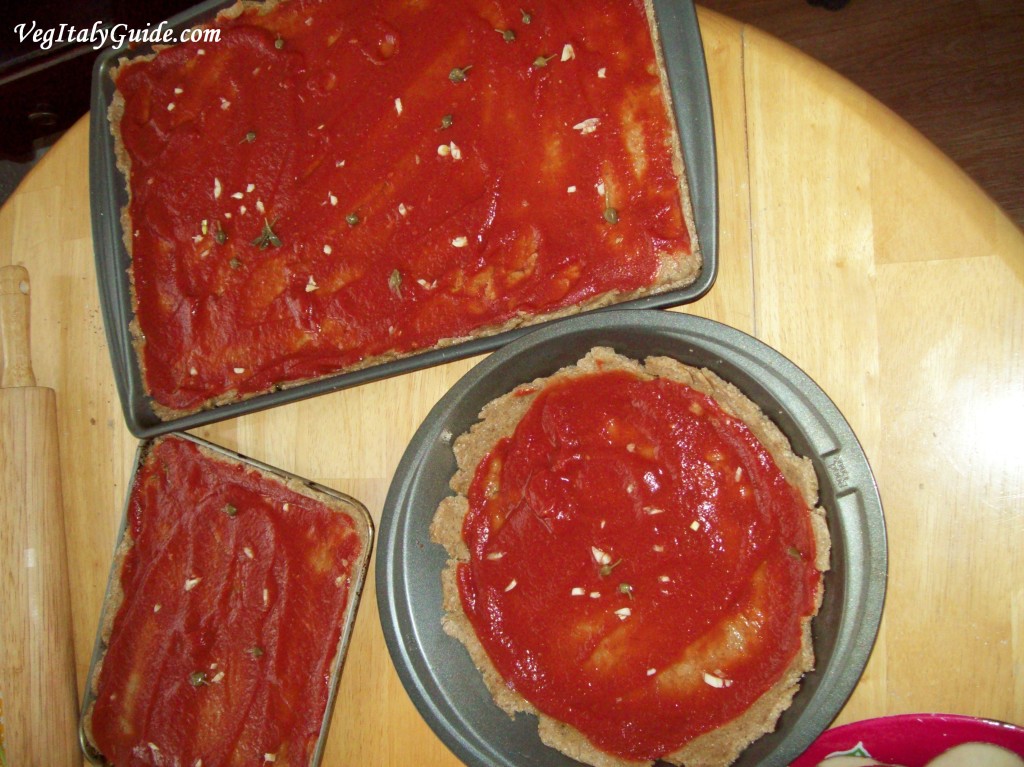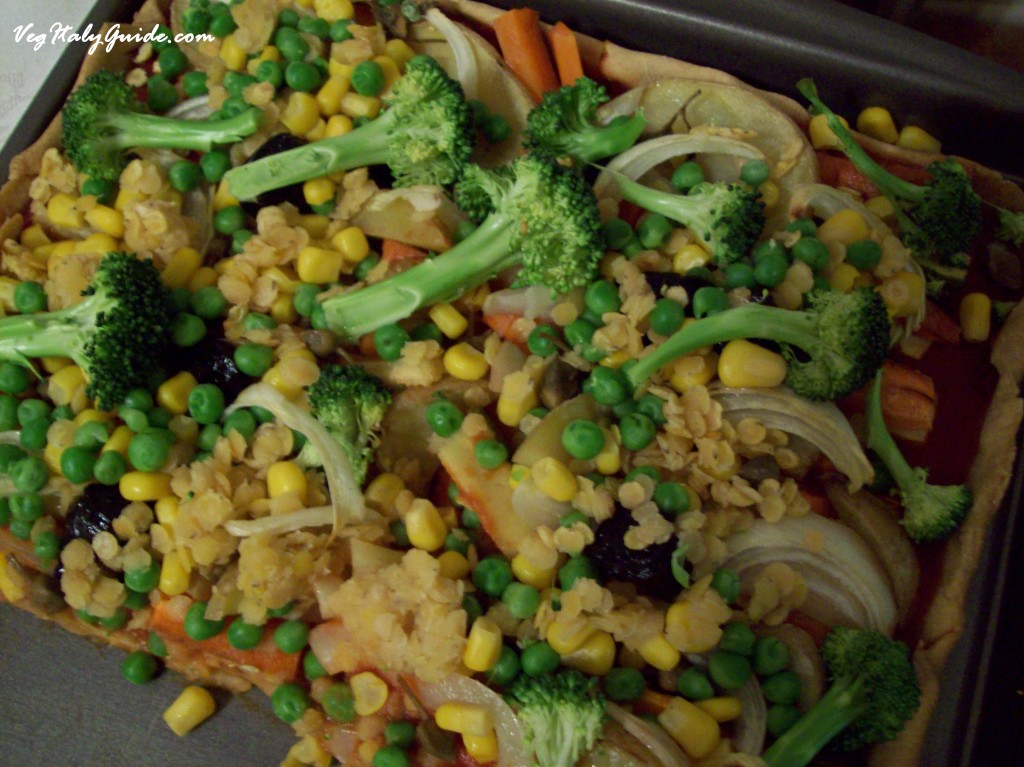Ciao a tutti! Pizza not only is a complete meal in Italy, but also a past-time. A work of art in some areas, if you will. There are a couple of things you need to know to get it right the first time. The trick to getting the perfect pizza is not so much in the ingredients, but a number of other things.
#1: the proper crust. First off, are you a thin-cruster or thick-cruster? Traveling through Italy one will notice that in some regions the thickness of crust varies greatly. Naples is famous for a traditional pizza crust, which is a bit higher and thicker, but not so thick you have to chew for a while. Places such as Tuscany are known for an extremely thin almost cracker like crust. Different flours will help determine the thickness of crust you want, as well as the rolling or tossing technique. It also needs to be determined if one is using yeast or not. Yeast will make the crust fluffier and usually thicker. For example, we used whole wheat/rye flour mix in our pizzas. They remain thinner and do not rise, but in generally are more difficult to work with than white dough simply because more kneading is required. Experiment….the adventure is yours!
#2: the right amount of salt. It’s always a dilemma because adding too much kills the taste of the vegetables on the pizza, but also isn’t so health-friendly. Salt can be added either into the pasta dough, onto the pasta dough after it has been prepared for sauce and vegetables or simply added on top after the pizza is cooked. Salt is not a requirement whatsoever and one can choose his/her level of saltiness.
#3: the right amount of tomato. Adding too much tomato also kills the fresh vegetable taste. Of course, if you love tomatoes, go for it. Fresh tomato sauce is ideal, but will evaporate quicker in the oven since it is mostly water and not so dense. If using some store-bought sauce, check to see if it is diced, stewed, sauce or paste. If you buy tomato paste it will need to be diluted with a bit of water. The paste is the most dense of the different types and will not evaporate like canned sauce or homemade tomato sauce will. The taste will also be different. Obviously fresh tomatoes tastes….well fresher! Is tomato sauce mandatory?? NO! Pizza Bianca is found all over Italy. It is pizza without the tomato sauce 🙂
#4: the right amount of cheese. With the faux cheese we noticed that the mozzarella is generally less strong than the faux provolone we use. In fact, on the pizza the mozzarella really did not add any taste at all so if you want a cheesier taste, go for the provolone. It is best to put the cheese on after you spread the sauce. This way it will melt more evenly and will not burn. Cheese that is added onto the top of the pizza can be added a couple of minutes before the pizza is done.
#5: What vegetables to use? Anything goes. We have used everything on our pizzas and they all came out great! Hard vegetables like potatoes and carrots take a bit long to cook. If mixing them with delicate green vegetables such as spinach it is best to cook the pizza first with the hard veggies then add the spinach a couple of minutes before the pizza is done. Same with broccoli, kale, corn kernels etc. Onions work best if you put them onto the pizza first because the taste absorbs into the crust. We used potatoes, carrots, onions, broccoli, black olives, peas, and red lentils on this one. For a stronger taste you can add garlic and capers on top of the sauce.
Our pizza turns out pretty good every time, not only because of my husbands Italian blood, but because we experimented quite a bit to get it right!
VegItalyGuide.com




Ciao, can I share some of your photos? With link to your blog of course
Ciao Giovanna, yes, you may share photos with a link to our blog, grazie!